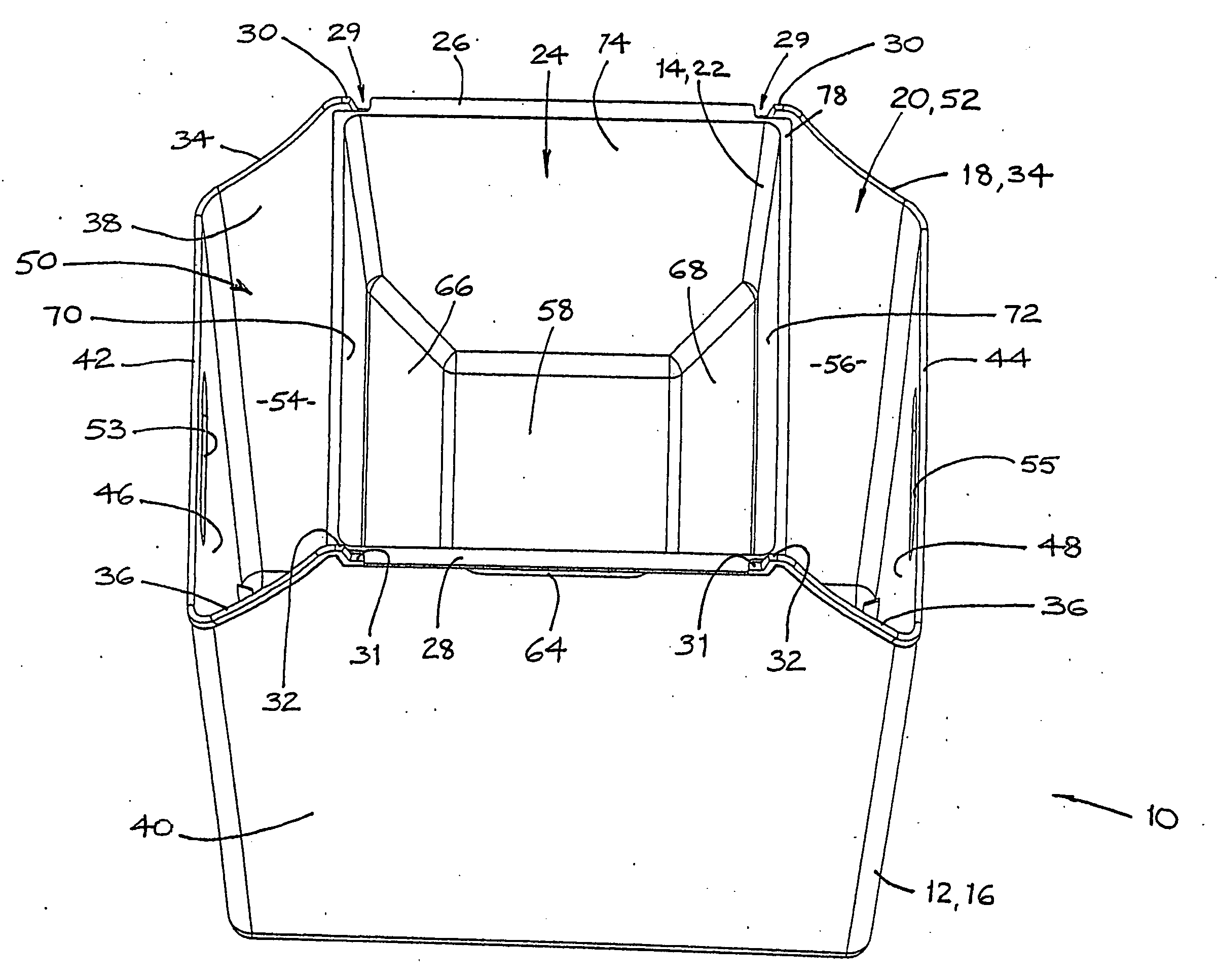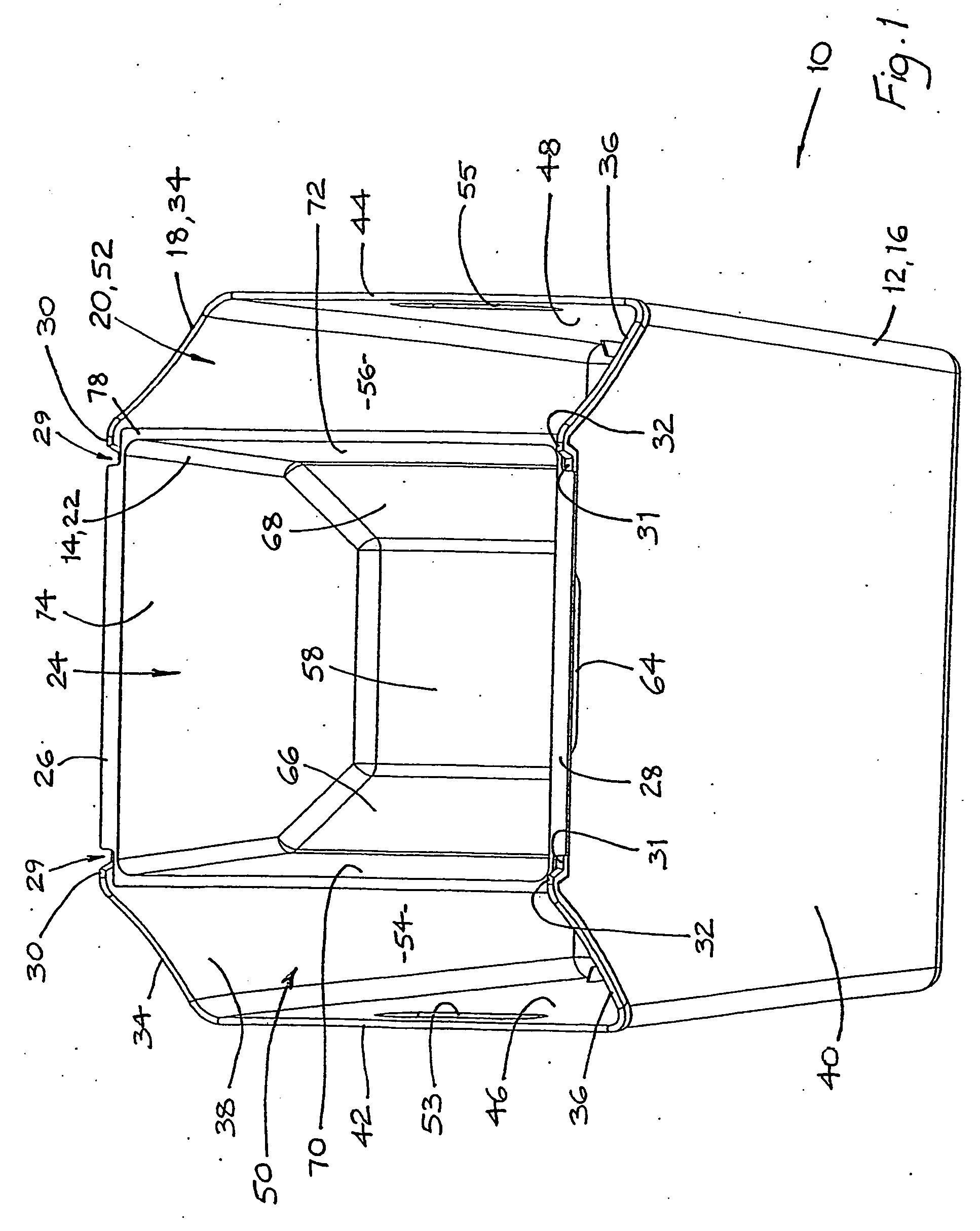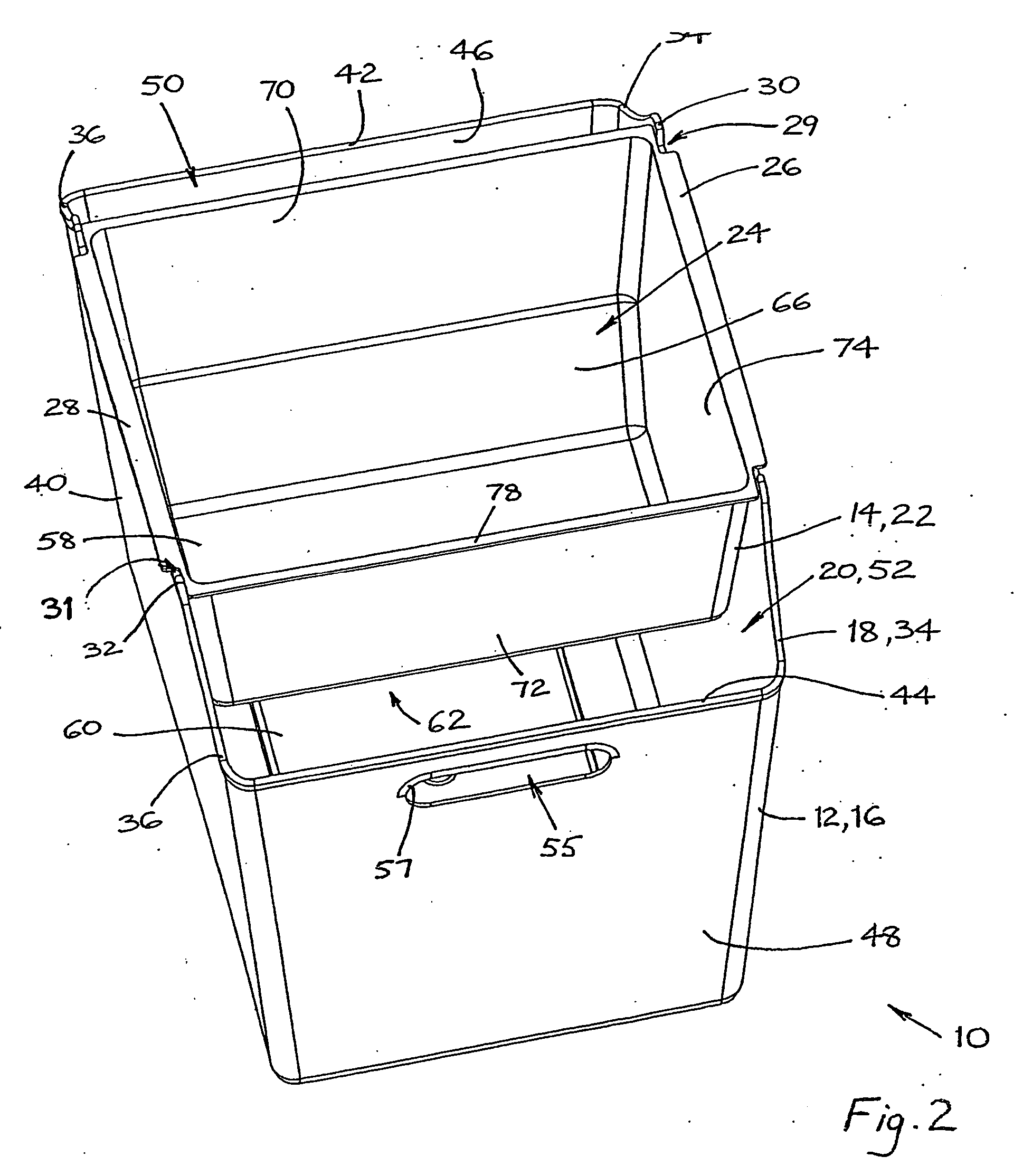Waste recycling bin
a waste bin and recycling technology, applied can solve the problems of large space occupied by waste bins, office workers choosing to discard, and limited success in the field of waste recycling bins
- Summary
- Abstract
- Description
- Claims
- Application Information
AI Technical Summary
Benefits of technology
Problems solved by technology
Method used
Image
Examples
Embodiment Construction
[0029] The waste recycling bin 10 shown in an operable condition in FIGS. 1 and 2 has a first or primary compartment 12 and a second or secondary compartment 14. The primary compartment 12 is adapted to receive office waste paper and the secondary compartment 14 is adapted to receive other items for which recycling may not be required; such as food scraps, drink containers and discarded office items. If food scraps are to be received in the secondary compartment 14, it should be lined with a plastic bag.
[0030] The primary compartment 12 (see FIGS. 3 to 5) has a main body 16 having a floor 60, side walls 38, 40, 46, 48, and a rim 18 which defines an opening 20 of the main body 16. The secondary compartment 14 (see FIGS. 6 to 8) also has a main body 22 having a floor 58, side walls 70, 72, 74, 76, a rim 78 which defines an opening 24 of the main body 22, and rim engaging means in the form of outwardly projecting flange portions 26, 28 on opposed sides of the opening 24 which are adap...
PUM
| Property | Measurement | Unit |
|---|---|---|
| holding volume | aaaaa | aaaaa |
| size | aaaaa | aaaaa |
| depth | aaaaa | aaaaa |
Abstract
Description
Claims
Application Information
 Login to View More
Login to View More - R&D
- Intellectual Property
- Life Sciences
- Materials
- Tech Scout
- Unparalleled Data Quality
- Higher Quality Content
- 60% Fewer Hallucinations
Browse by: Latest US Patents, China's latest patents, Technical Efficacy Thesaurus, Application Domain, Technology Topic, Popular Technical Reports.
© 2025 PatSnap. All rights reserved.Legal|Privacy policy|Modern Slavery Act Transparency Statement|Sitemap|About US| Contact US: help@patsnap.com



